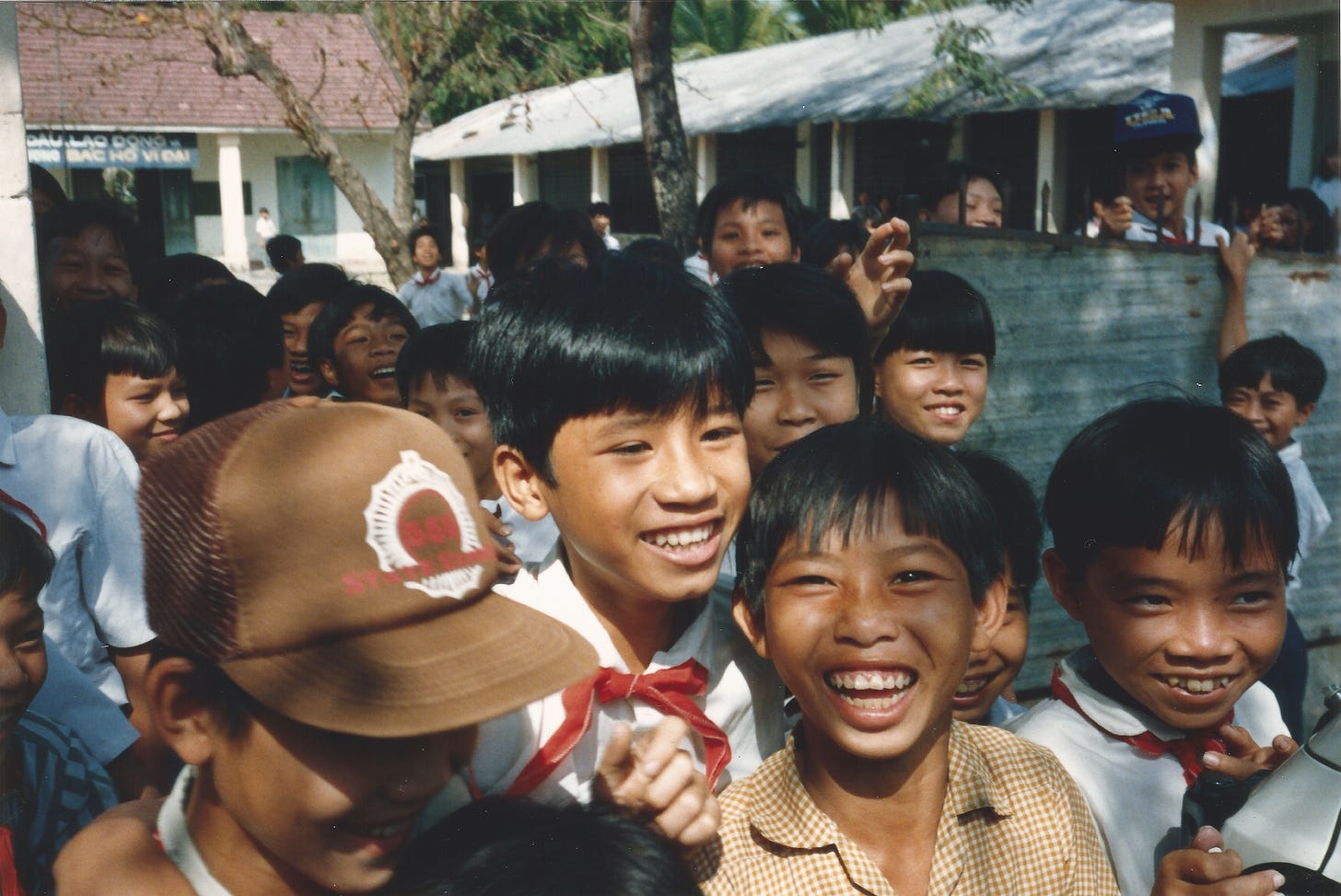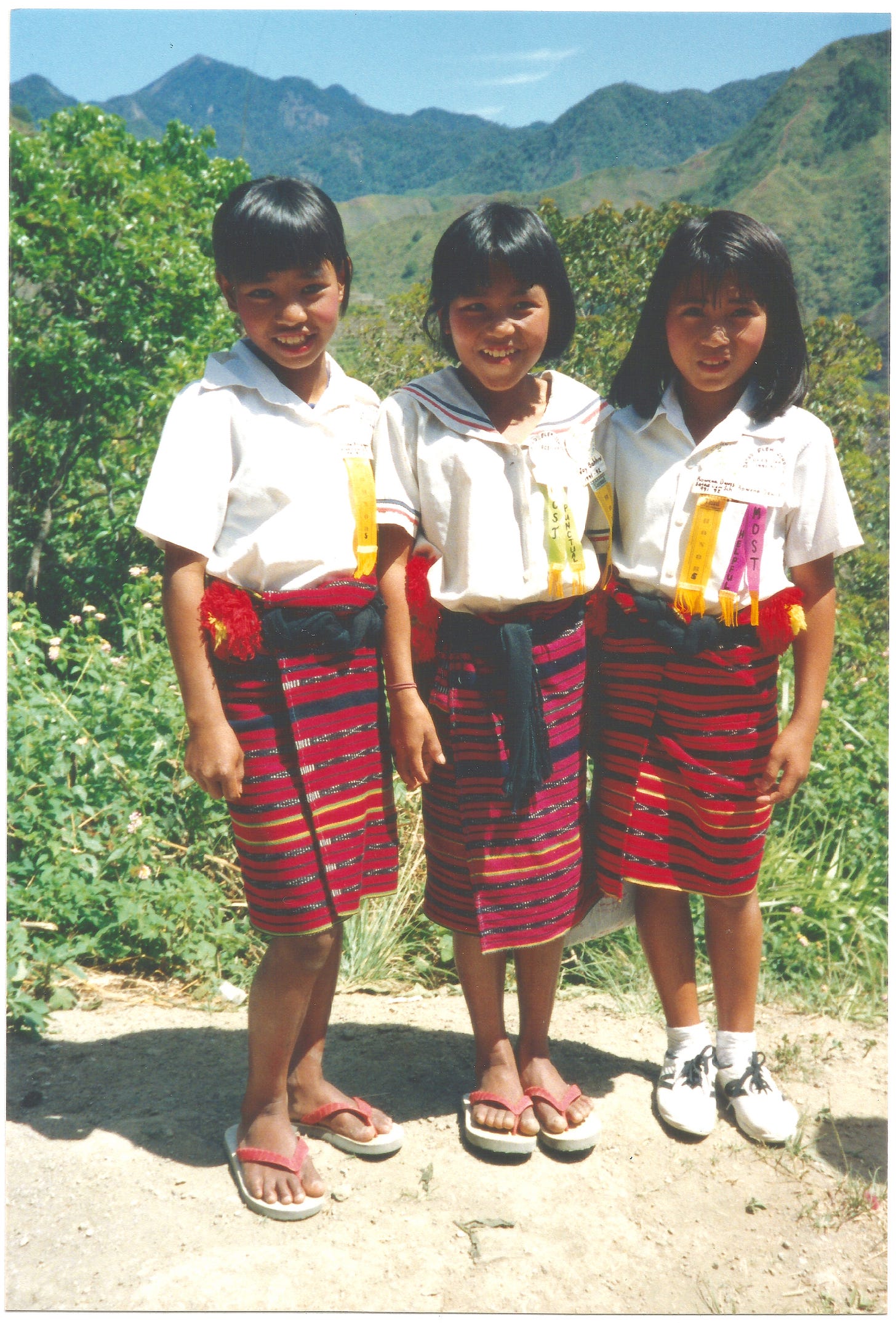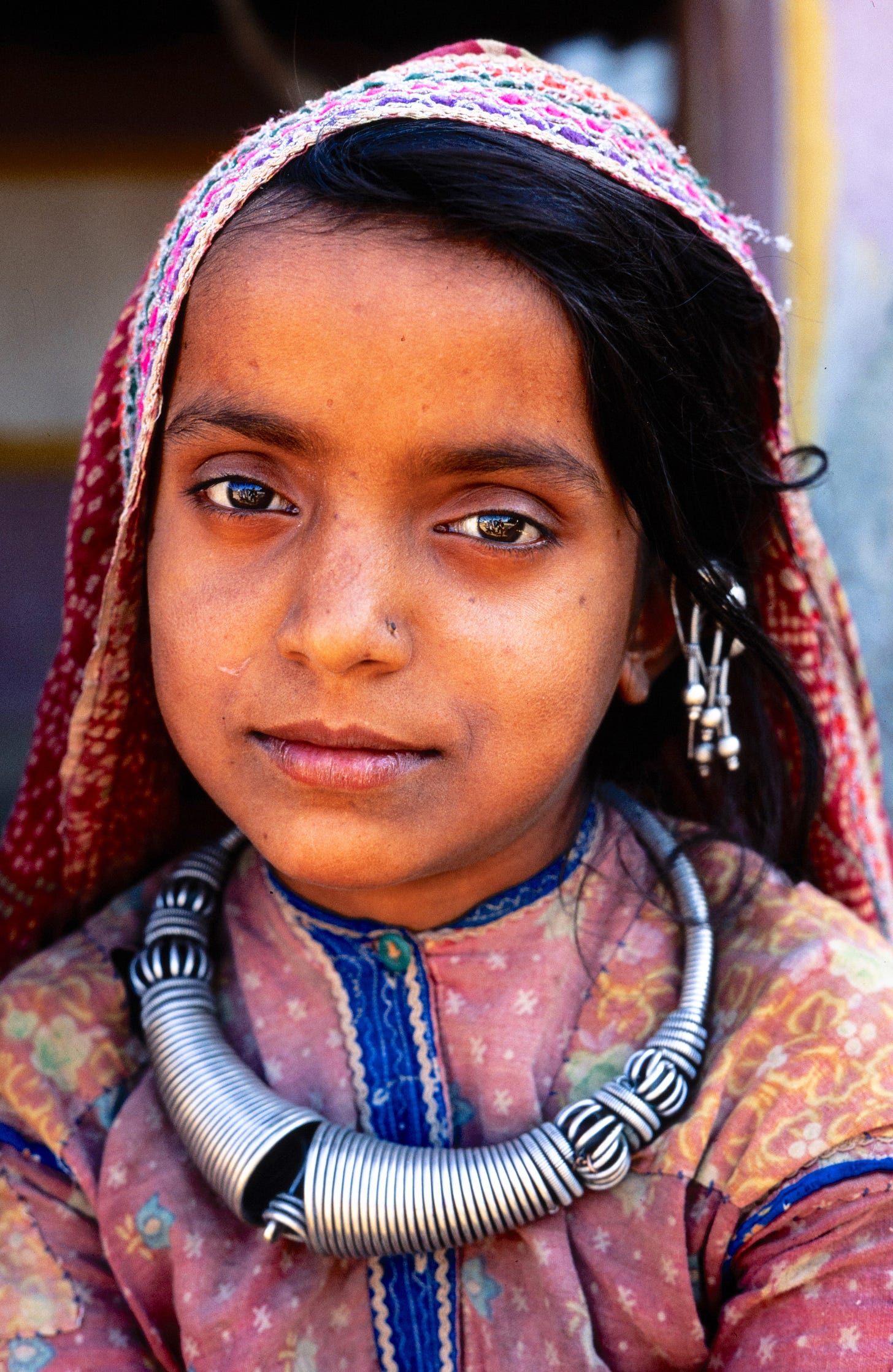All those travel photos of other people's children. Where are they now?
Like many Western tourists, I've enjoyed taking pictures of kids in developing countries. But now I have mixed feelings.
Some of my most treasured travel memories are photos of children. Mainly my own, of course. But I also have dozens of images of other people’s children - mischievous street kids in Nicaragua, neatly-dressed schoolboys in Vietnam, hill tribe villagers in Northern Thailand.
I always tried to engage these children in some playful chat before and after pointing a camera in their faces. So, in most cases, the images don’t just show a cute smile or a cheeky grin, but also recall a brief, but real, human connection.
Some of those photos date back to the early 1990s, three decades ago, and I look at the children’s images now and wonder what became of them. That 10-year-old girl might be a mother, perhaps a grandmother. Did she go to college and become a doctor or a lawyer? And that boy in rags. Did he get himself off the streets, or was he sucked into an all-too predictable life of crime, addiction, perhaps an early death? That’s a miserable thought.
I feel increasingly uneasy about photographing children now. Partly because almost everybody has a camera in their pocket. Travelling with a friend in the 1990s, we would take pictures of kids with a digital camera and show them the images on the screen. The children would squeal and roar in delight - it may have been the first time they’d seen an image of themselves. My friend took some wonderful photos of children clamouring around my camera for a view. We were happy to be giving them something in return, or so we thought. Though looking back now the deal doesn’t look so equitable.
Today, if you approach a child in a city in Asia or Latin America asking them to pose for a photo, you could be thought of as creepy, or worse. I imagine local people might think: “Don’t they have children and grandchildren of their own to photograph? How sad.”
Four years ago I travelled in Indonesia with my daughter who was then 14. At a restaurant in Bali the waiters and waitresses - who looked barely older than her - asked her for a group selfie and she was very happy to oblige. Then on the island of Flores she was stopped in the street on several occasions by teenage girls who asked to pose with her. I suppose they saw plenty of older Western tourists but not many their own age. The girls would end up taking each other’s portraits and enjoying a brief awkward chat.
I found this turning of the tables deeply satisfying. In the affluent West we often bemoan the ubiquity of mobile phones, but here was a technology that went some way to levelling the economic playing field and creating a mutual connection across cultures. And how strange for us to feel like the exotic creatures, now the object rather than the subject.
In 1992, in the Philippines, I stayed for four nights in a tiny mountain village called Batad, a two-hour hike from the nearest road and several driving days from the capital, Manila. Encircled by 2,000-year-old rice terraces, Batad was made up of a dozen or so houses, a Catholic church with a rusted tin roof and a single guest house.
When I emerged from a path through the forest and first caught sight of the village, I was greeted by two bare-foot boys aged about six or seven. They told me they lived in Batad and would show me the way. When I asked to take their photograph, they could barely contain their glee.
Christina ran the guest house, a cheerful middle-aged woman who cooked all my meals and made small talk as we sat out on the terrace, watching the village children wash clothes on the rocks. There were three guest rooms, all occupied, so together we formed a cosy makeshift family. As darkness fell, the palm trees flickered with fireflies and we drank bottles of San Miguel beer.
Christina's daughter, Vivienne, was about eight or nine and cute as a button. After dinner she and two school friends sang us traditional Ifugao songs and performed simple dance routines by the light of a kerosene lamp. They threw in a couple of Western numbers - John Lennon's Imagine and Everything I Do (I Do it for You) by Bryan Adams, a hit at the time. As a reward, we bought them each a bottle of Coca-Cola. They could hardly have been more delighted. Nor could we.
Life in the village looked idyllic but it was hard. The women did almost all the work, planting and harvesting rice then pounding the grains from the husks using huge pestles and mortars. Christina’s husband was a drunk, sometimes legless before dusk. The last rice crop had been damaged by heavy rain and the trickle of money from this handful of tourists was proving valuable.
On my last day in Batad, I arranged to take a photo of Vivienne and her friends. They wore school uniform - a white cotton blouse and hand-woven tapis, similar to a sarong. One of the girls wears a hand-written badge that reads: “Most Helpful”. Another’s says: “Punctual”.
In 1995 the rice terraces of Batad were designated a World Heritage Site by UNESCO, and tourism grew steadily. According to an online guide there are now numerous places to stay and a jeepney will take you to within 15 minutes’ walk of the village. Most tourists stay just one night.
Looking now at this photo, I wonder how these three girls’ lives unfolded. Did they stay in the village, perhaps to open their own guest houses, or join the new global economy and find a different kind of wealth? Maybe one became a school teacher in a nearby town, another a singer in a Filipino cover band performing on a cruise ship somewhere.
What would I wish for them? It’s impossible to say, other than happiness.







Lovely sentiments and it would be fascinating -- if potentially heartbreaking -- to learn what became of these children.